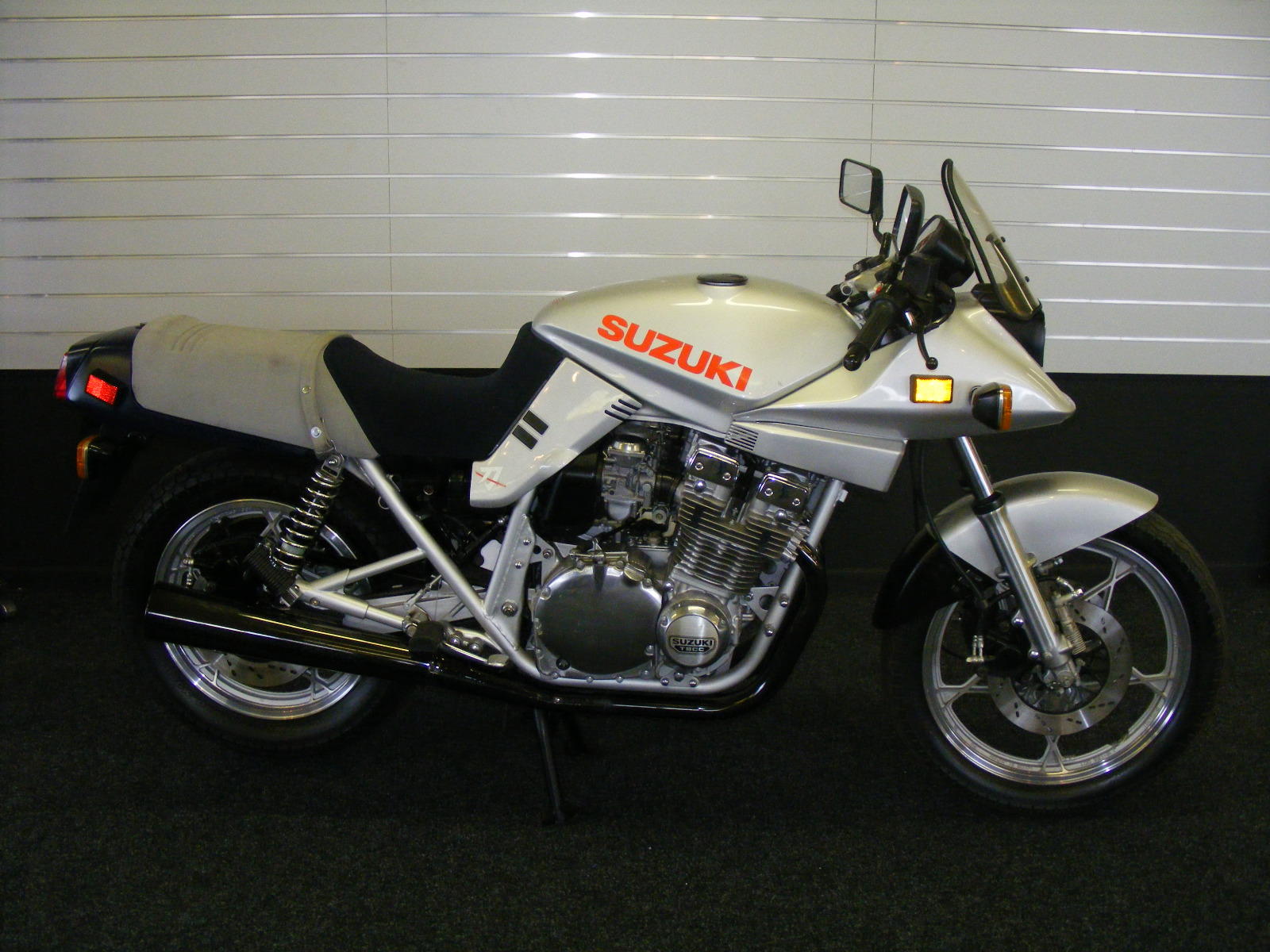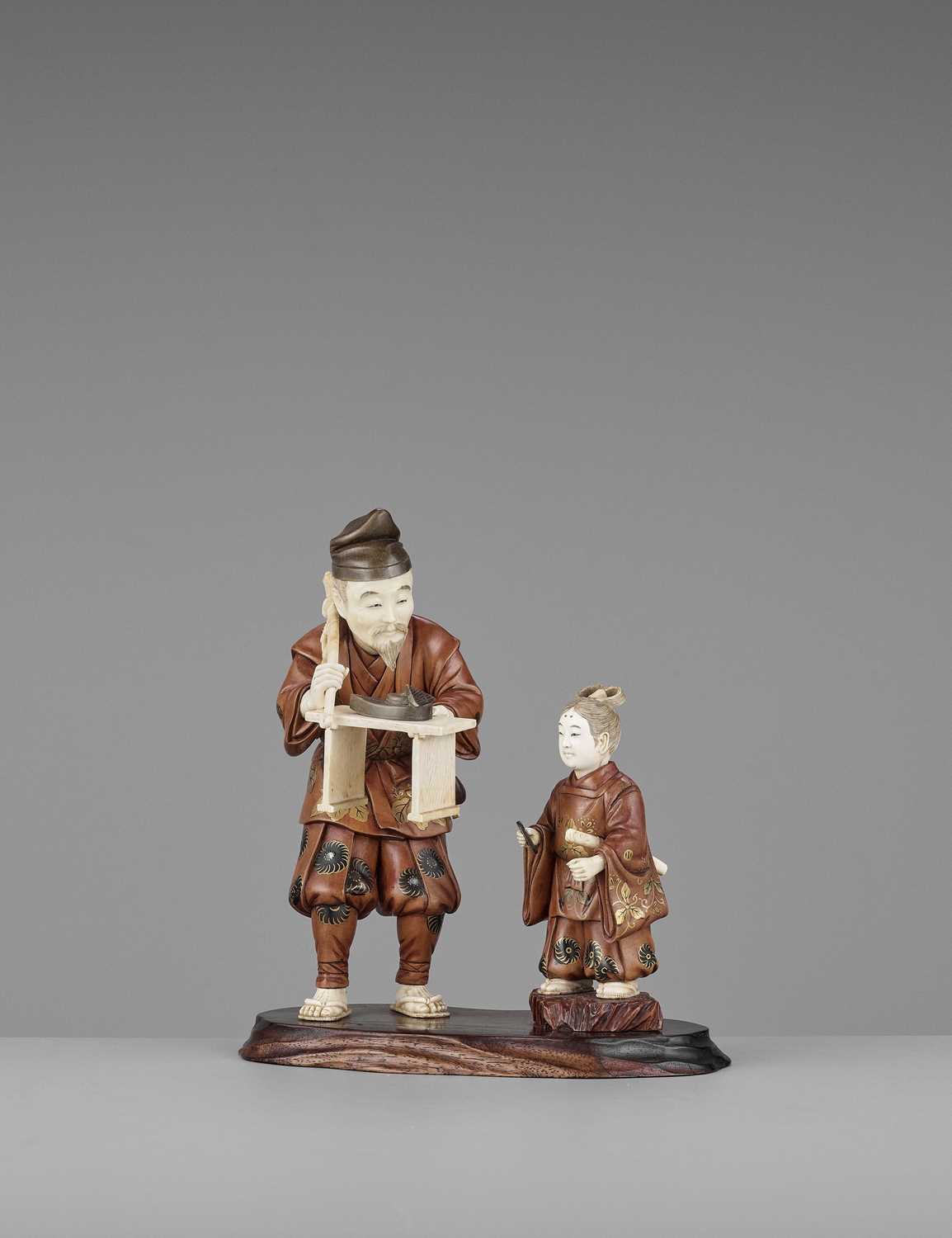Lot details Japan, the blade 15th-16th century, Muromachi (1336-1573) to Momoyama period (1573-1615), the mounting 17th-18th century, early Edo period (1615-1868) The blade: The slender, gently curved blade with shinogi-zukuri and iori mune. The hamon is gunome-midare in nie-deki with many hataraki including kinsuji and chikei, ending in a komaru boshi. The hada is itame. Both sides of the blade with a full-length bohi. The nakago is suriage with kiri jiri, mumei, one of the three mekugi-ana is filled with lead, part of an early mekugi-ana is visible at the bottom of the nakago. The mounting: The shakudo tsuba of maru-gata form with two hitsu, decorated in gold, silver, and copper takazogan with a boar and autumn grasses under a flat-inlaid moon to one side and flowers above a stream to the other. The iron fuchi and kashira are inlaid with gilt-copper to depict rain dragons and a reishi cloud. The figural menuki with details in copper and gold. The rayskin tsuka with green silk tsuka-ito. The saya is lacquered in roiro. With an NBTHK Kicho Token (‘Precious Token’) white paper, dated 12 March 1967 (Showa 42), no. 122478, attributing the blade to Jumyo, noting a nagasa of 2-shaku, 3-sun 5-bu, in the original envelope. NAGASA 71.1 cm, LENGTH 101.5 (total) Condition: Very good condition with minor wear and traces of use, the blade with a tiny nick to the kissaki and scattered small fukure, the mounts with few minuscule nicks. Provenance: Dutch collection. With a fine silk brocade cover decorated in gold and colored thread with fans and swirling clouds. The Jumyo (lit. ‘longevity’) school has its origins from Yamato Province (Nara Prefecture) and moved to Mino Province (Gifu Prefecture) in the Kamakura period (1185-1333). The tradition continued for centuries, right up until the end of the Edo period in 1868. Auction comparison: Compare a related katana, signed Noshu Ju Jumyo, also with bohi on both sides but dated 18th century, at Christie’s, 13 December 2017, London, lot 17 (sold for 4,750 GBP). Compare a related katana, signed Jumyo, dated late 16th century, Momoyama period, at Christie’s, 21 June 2001, London, lot 9 (sold for 4,230 GBP).
Lot details Japan, the blade 15th-16th century, Muromachi (1336-1573) to Momoyama period (1573-1615), the mounting 17th-18th century, early Edo period (1615-1868) The blade: The slender, gently curved blade with shinogi-zukuri and iori mune. The hamon is gunome-midare in nie-deki with many hataraki including kinsuji and chikei, ending in a komaru boshi. The hada is itame. Both sides of the blade with a full-length bohi. The nakago is suriage with kiri jiri, mumei, one of the three mekugi-ana is filled with lead, part of an early mekugi-ana is visible at the bottom of the nakago. The mounting: The shakudo tsuba of maru-gata form with two hitsu, decorated in gold, silver, and copper takazogan with a boar and autumn grasses under a flat-inlaid moon to one side and flowers above a stream to the other. The iron fuchi and kashira are inlaid with gilt-copper to depict rain dragons and a reishi cloud. The figural menuki with details in copper and gold. The rayskin tsuka with green silk tsuka-ito. The saya is lacquered in roiro. With an NBTHK Kicho Token (‘Precious Token’) white paper, dated 12 March 1967 (Showa 42), no. 122478, attributing the blade to Jumyo, noting a nagasa of 2-shaku, 3-sun 5-bu, in the original envelope. NAGASA 71.1 cm, LENGTH 101.5 (total) Condition: Very good condition with minor wear and traces of use, the blade with a tiny nick to the kissaki and scattered small fukure, the mounts with few minuscule nicks. Provenance: Dutch collection. With a fine silk brocade cover decorated in gold and colored thread with fans and swirling clouds. The Jumyo (lit. ‘longevity’) school has its origins from Yamato Province (Nara Prefecture) and moved to Mino Province (Gifu Prefecture) in the Kamakura period (1185-1333). The tradition continued for centuries, right up until the end of the Edo period in 1868. Auction comparison: Compare a related katana, signed Noshu Ju Jumyo, also with bohi on both sides but dated 18th century, at Christie’s, 13 December 2017, London, lot 17 (sold for 4,750 GBP). Compare a related katana, signed Jumyo, dated late 16th century, Momoyama period, at Christie’s, 21 June 2001, London, lot 9 (sold for 4,230 GBP).















Testen Sie LotSearch und seine Premium-Features 7 Tage - ohne Kosten!
Lassen Sie sich automatisch über neue Objekte in kommenden Auktionen benachrichtigen.
Suchauftrag anlegen